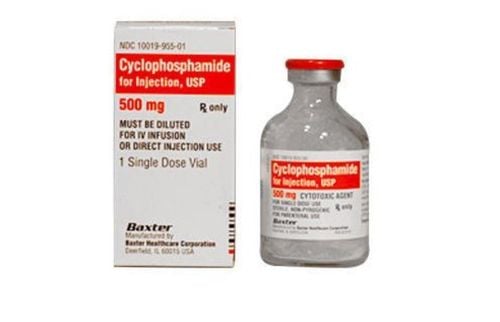This is an automatically translated article.
The article is professionally consulted by doctors working at Oncology Center - Vinmec Central Park International General HospitalRadiation therapy is an important method in cancer treatment, requiring it to be conducted sequentially and accurately, in which treatment planning is an important step, determining the patient's radiotherapy outcome.
1. Factors to consider when planning radiation therapy
Cancer type. The location where the cancer exists in the body. Size of the tumor. The tumor is located near a radiation-sensitive area. Patient's health status. Radiation therapy planning is the most important step, very complex and requires a long time to complete. Your doctor will plan to give the most powerful dose of radiation to the tumor but at the same time protect as much healthy tissue as possible.
2. Radiotherapy planning process

The radiation therapy process is summarized as follows: Prepare the patient - Simulate the scan - Plan the radiation therapy - Check the quality of the radiation therapy - Conduct the radiation therapy.
2.1 Simulation This is the first step in radiation therapy planning, the patient is asked to lie still for the doctor to determine the treatment position.
The area to be treated will be marked. Use CT - scan or PET-CT to check the size of the tumor, predict the most likely to spread to the area, demarcate the healthy tissue inside the treatment area. treatment, measurement, and treatment planning. Simulation can be performed on PET/CT with a 3-D laser localization system imaged by PET/CT based on high concentration of FDG radiopharmaceutical on cancer cells, giving a picture of tumor metabolism. early, more accurate. PET/CT helps determine the extent of tumor invasion as well as lymph node metastasis even with small size at the molecular and cellular level, thereby helping to determine the volume of radiation therapy as well as radiation planning. most thoroughly treated. 2.2 Treatment planning After the whole image is taken, the simulated images are transferred to the computer system for treatment planning. The radiologist determines the radiotherapy volumes: GTV (raw tumor volume) on simulated CT, CTV (clinical target volume) and PTV (radiotherapy planning volume). Identify organs that need to be protected with limited doses. Limit of spinal cord: 45 Gy. Brain stem: 54 Gy. Optic nerve: 50-55 Gy, optic nerve: 54 Gy. Temporomandibular joint: 70 G. Average dose of parotid gland: 26 Gy, esophagus: 60 Gy. It is possible to identify additional organs such as oral cavity, larynx and pharynx... to optimize the dose to the lesion and reduce the dose in these organs. Determine the number of fields, beam angle, number of subdivision fields, beam energy 6 MV or 15 MV The number of fields depends on each specific case and radiotherapy technique. It is possible to plan 3D radiation therapy or dose-modulated radiation therapy - IMRT (Intensity Modulated Radiation Therapy) - focusing the highest radiation dose on the lesion (tumor, lymph node ...) and the lowest on the surrounding healthy tissue. (organs need to protect), reduce radiotherapy complications. Dose-modulated radiation therapy on simulated PET/CT is currently the most advanced technique, bringing high treatment efficiency and reducing radiotherapy complications. Check the quality of the plan: Check the plan with a dedicated phantom before firing. The permissible error is less than 5% (best < 3%).
Trắc nghiệm: Thử hiểu biết của bạn về bệnh ung thư
Ung thư là nguyên nhân gây tử vong hàng thứ 2 trên thế giới. Thử sức cùng bài trắc nghiệm sau đây sẽ giúp bạn có thêm kiến thức về yếu tố nguy cơ cũng như cách phòng ngừa bệnh ung thư.
Bài dịch từ: webmd.com
3. When can radiation therapy start?
Treatment usually begins 2 - 4 weeks after your scheduled radiotherapy appointment. Each patient has different treatment time frames.
The first radiation session is the longest of all the radiation sessions because the doctor has to put the patient in the same position as the day of the CT simulation, then take measurements, take X-rays and make sure Make sure this treatment position is the most accurate.
Subsequent sessions will be the same as the first, but shorter in duration. During the treatment, the doctor may take X-ray films to make sure the radiotherapy position is the most accurate.
It is very important to stay in the same position for each treatment.
4. Follow-up after radiotherapy

Inform your doctor or nurse of any unusual reactions. Some side effects of radiation therapy may appear early or late, depending on the location and dose of radiation therapy of the patient.
Vinmec International General Hospital has implemented complex radiotherapy plans, high-tech radiotherapy using Eclipse v15.5 planning system and ARIA v15.1 patient information management system.
Advantages of using the system:
The software system is synchronized with the hardware system of the radiotherapy machine of Varian (USA) for quick and accurate radiotherapy planning, patient information management effective safety. Enables dose-modulated radiotherapy (IMRT) and especially volume-modulated radiotherapy (VMAT) planning with high dose concentration on the tumor and minimal dose to surrounding healthy tissues. quickly and accurately. Allows planning complex radiotherapy such as body-positioning radiosurgery (SBRT), whole-axis radiotherapy (CSI), whole-body radiation therapy (TBI),... Radiation therapy for cancer is a method The method is widely used in medical applications. Currently, Vinmec Central Park International General Hospital has successfully applied this method to treat many cancer cases, helping to reduce clinical symptoms and limit cancer metastasis.
Oncology Department at Vinmec Central Park is fully equipped with cancer treatment modalities: From surgery, radiation therapy, chemotherapy, radiation surgery .... pain treatment. The diagnosis is made carefully: blood test, X-ray, ultrasound, magnetic resonance imaging, myelogram, myelogram, biopsy, immunohistochemistry, biological diagnosis molecule.
The treatment process is closely coordinated with many specialties: Center for Diagnostic Imaging, Laboratory Testing, Cardiology, Department of Obstetrics and Gynecology, Department of Endocrinology, Department of Rehabilitation, Department of Psychology, Department of Medicine. Nutrition, Pain Treatment Department aims to bring to patients the optimal treatment regimen and the most reasonable cost.
Customers can go directly to Vinmec Central Park to visit or contact hotline 0283 6221 166, 0283 6221 188 for support.
MORE:
What you need to know about volumetric arc modulated radiation therapy (VMAT) How many types of radiation therapy are there for cancer? Which option is reasonable? The role of IMRT and SBRT radiotherapy in the treatment of liver cancer













